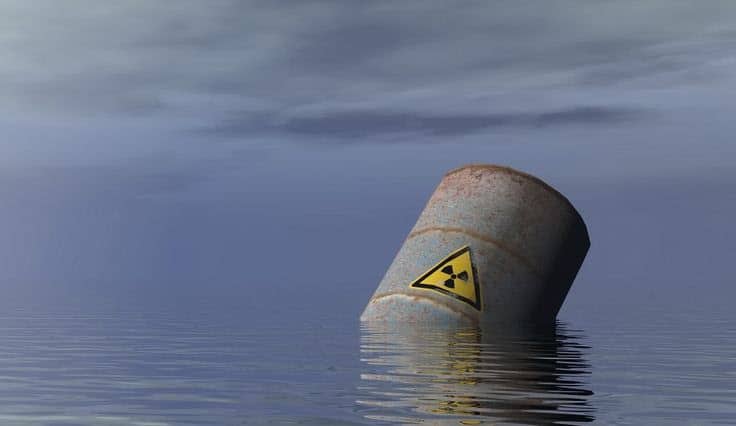
The Atlantic Ocean is polluted, with some 200,000 drums of radioactive waste dumped between 1950 and 1990 and left unattended. This pollution is the result of the development of nuclear technology after the Second World War, in the military and energy sectors, as well as in the medical field, notably with radiography and the use of radioactive tracers, and in traditional industry, such as the sterilization of certain foods by irradiation.
From then on, radioactive waste will multiply, since each use of radioactive equipment will produce radioactive waste, either directly, as in the case of a nuclear reactor, or indirectly, as in medicine, where the gloves used in scintigraphy are also radioactive waste.

This waste, some of which contains long-lived radionuclides, must be managed by the countries concerned over the very long term in a hermetically sealed environment to prevent any radioactive leakage. Since the 1950s, countries faced with the problem of radioactive waste management have considered the deep-sea environment, at depths of over 4,000 meters, to be a suitable place to store this type of waste, as it was considered to be far removed from human life, desert-like and devoid of life.
200-liter metal drums were thus stored at the bottom of the North Atlantic for 40 years by the United States and European countries such as France, which submerged 46,000 drums during nuclear test campaigns in 1967 and 1969. For some time, prior to the 1975 London Convention, there was no legislation governing the dumping of nuclear waste in international waters.

Since then, a moratorium has been in place, followed by a complete ban in the early 90s, and no new casks have been dumped, although some of them, dumped for more than 70 years, had an initial lifespan of around 20 to 25 years.
Available information indicates that these drums, containing toxic waste and radionuclides with variable behavior and lifetimes, present a relative risk as they are classified as very low, low or medium activity. Until now, only two scientific campaigns had been carried out in the 1980s, finding only six drums and providing no certainty as to either the condition of the drums or any radioactive pollution.
Two new campaigns to address these two issues are planned, the first to take place in 2023 or 2024 and focus on mapping the seabed and locating the drums, as there is no precise data on their whereabouts. Two 6,000 km2 zones will be mapped, and water will be sampled in the vicinity of the drums found, to detect any radionuclide leak and its characteristics.
One of the difficulties with current scientific data is that it does not tell us how radionuclides would behave if the drums were to deteriorate, and in particular how they might move. Some may settle in sediments, while others could migrate into seawater and present a risk to animals, provided we know their degree of toxicity and whether they can be assimilated by living organisms.
These more complex issues will be the subject of the second campaign, which will take place one year after the first. This second study will attempt to isolate any radioactive activity in the drums from ambient radioactive activity linked to nuclear testing and authorized discharges from power plants. Sediments, shellfish and fish will be sampled in the vicinity of the drums to analyze any contamination and assess its effects.

Some forty scientists will embark on each campaign, and the French Research Institute for Exploitation of the Sea’s UlyX submarine, which can dive to 6,000 meters, will be tasked with photographing the drums. These two missions will enable precise mapping of the location of the submerged casks and the radioactive footprint of the seabed. If any leaks are detected, new campaigns will need to be planned with more targeted actions.
The two project leaders, Javier Escartin from the geology laboratory of the École normale supérieure and Patrick Chardon from the physics laboratory in Clermont-Ferrand, state that all data will be made available to the public in a transparent manner. The researchers estimate that the cumulative amount of submerged waste represents around 36 petabecquerels, 300 times less than the quantity emitted by the Chernobyl accide




